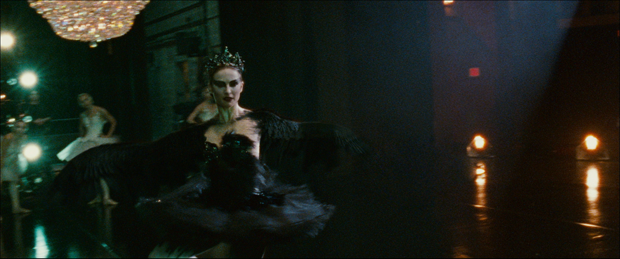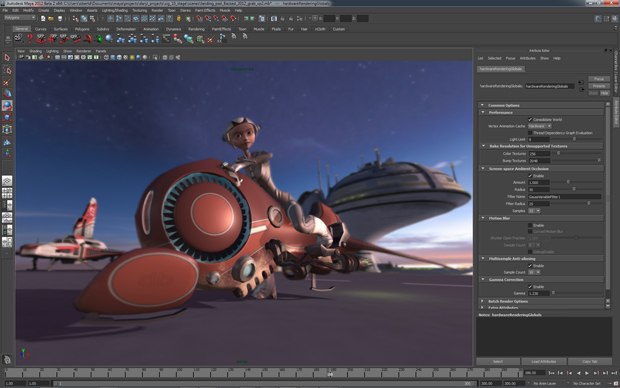Autodesk's SVP discusses how the software giant has reshaped its strategy in response to industry demand.
This past year, the media and entertainment industry has been a study in contrasts. Activision's Modern Warfare Black Ops earned an unprecedented $1B in six weeks -- the biggest launch of any entertainment property in history. A few months later the company was canceling franchises and restructuring as it faced concerns over profitability. Such stalwart visual effects companies as CORE, Asylum, IMD and CaféFX -- which created the award-winning effects behind the box-office success of many a movie -- closed their doors as they failed to do so profitably. And despite delivering cutting-edge, commercially successful video games, companies such as Bizarre Creations and Propaganda Games closed their doors while Harmonix was sold for a shocking $50.
However, while doors were closing for some they were opening for others. Despicable Me earned more than $500M at the box office yet was made on a budget of just $70M. Mac Guff, a small animation company in Paris, delivered the entire blockbuster movie. VFX expanded in a major way to network and cable television with shows like V, Boardwalk Empire and Glee, all of which are produced on significantly smaller budgets than feature films. And VFX have matured into key storytelling devices for non-fantasy, live-action films such as The Social Network and Black Swan. In the games industry, soaring consumer adoption of both social gaming and increasingly capable mobile devices drove demand for games and interactive web content to new heights catapulting companies such as Zynga to the fore.
These stops and starts speak volumes about where the industry is today. We are in a state where the demand for quality in visual effects and video games is absolutely outpacing budgets. Delivering amazing work doesn't necessarily translate into sustained profitability, creative innovation needs to be combined with production efficiency. But the fact that visual effects are being democratized and there is a growing demand for content on new platforms shows us that there are new paths to profitability.
Autodesk believes that these paths can be found in technology, and in new ways of working. That's where we have been focusing our research and development efforts: helping creative visionaries rise to industry challenges and compete more effectively. The solutions we are bringing to market are designed for this new world of Digital Entertainment Creation -- one where companies need to back creative innovation with profitability through sleeker pipelines, standardization of tools and process for visual effects, and through tapping into new opportunities such as mobile and web.
Early Decisions Reduce Costs
Whether for feature films, video games or television, the earlier in the pipeline decisions can be made, the better. The "I'll tell you when I like it" model that we currently see in post is unaffordable – there's no way to efficiently execute when creative decisions are being made at the last minute. Autodesk's tools and pipelines are designed to help prototype the story early -- to capture creative intent and convey it all the way through the process. The goal is an integrated pipeline where decisions can be made in the context of the story and easily propagated. Do previs in Maya; export timelines to Smoke; so that when you're in post you can immediately reference the creative intent of all the decisions that were made before. To help accomplish this we have made major enhancements to products and workflows -- from the Maya viewport that lets artists animate in a context that is closer to what will end up on screen to single-step workflows between applications. We have also been developing common visual language, icons and keyboard shortcuts between our products to help our customers move data quickly, preserve creative intent and deliver a higher quality product faster through targeted iteration. If budgets won't expand, non-creative tasks need to shrink. Any time or effort spent that doesn't show up on the screen can and should be avoided. Previs helps, as does the ability to move data efficiently from one part of the process to the next.
VFX Saves Production Costs Elsewhere
The fact is, of course, production budgets are not increasing and timelines are shrinking. But the same force (profitability) that is squeezing VFX production in high-end feature film is creating opportunity in new areas such as television, where VFX can help cut costs. In fact, VFX are proliferating in television as more and more shows look to digital technology to help create scenes, sets and environments that are prohibitively expensive to stage, cast and shoot. For similar reasons, visual effects are also increasingly used to augment low budget live action films. But visual effects also enable stories to be told that simply aren't possible any other way. Natalie Portman's dramatic transformation in Black Swan, is a case in point. It is a key crescendo to the story. Without Look Effects' visual effects, that story simply could not have been told. The fact that the film was nominated, not in the Visual Effects category -- but for Best Picture, demonstrates the maturation of visual effects as a narrative device. These are new opportunities for visual effects and VFX tools are important storytelling tools just like any other that filmmakers already have at their disposal.
These new opportunities are now possible because of the democratization of visual effects tools and technology. Autodesk introduced its entertainment creation suites at the start of the recession to help accelerate this trend, making it easier for a broader range of productions to integrate VFX into their stories. The suites are essentially "studios in a box," at affordable prices. Independent-minded VFX artists can set up a studio anywhere in the world with these tools, and with the right talent, can deliver high quality work that meets the highest film, game and TV standards.
Mobile and Online Content Creation is Booming
New opportunities are also emerging in mobile and web content development. Analysts predict that mobile games will generate more revenue than console games by 2015, and the number of worldwide 3G users is growing more than 30% every year. Not only that but the graphics capabilities of mobile devices continues to advance in leaps and bounds. History is about to repeat itself. Just as in the late 80s, PC gaming shifted from 2D raster graphics to 3D graphics, so web and mobile gaming is about to make the transition. Only this time the shift will be from 2D Flash to 3D. The demand is already soaring as new devices clamor for 3D content. And even if the final game is rendered in 2D it is generally far easier to create and animate in 3D. In anticipation of these changes, we've designed our solutions to increase the quality and reduce the complexity of delivering both video and 3D content to web browsers and mobile devices. The recent acquisition of Scaleform forms part of our strategy to enable the fast authoring and deployment of creative content on console, mobile and web platforms. For example, the latest release of Autodesk Scaleform enables Flash content to be played in realtime on iOS devices.
Another industry growth area is online advertising and marketing, which is fast replacing print, and to some extent television, advertising as the preferred means to reach consumers. However, standing out from the crowd is even more difficult online and capturing the viewer's attention requires creating engaging experiences. There is no point spending hundreds of thousands on paid search if the customer ends up "bouncing" off your page. Helping companies engage with customers online represents a large emerging opportunity for growth and profitability in 3D content creation. The best in the industry are already creating innovative 3D content online. We are breeding a new generation that expects the gamification of the digital world. Compelling 3D characters and storylines will engage viewers in new ways. Creative companies or individuals will face a wealth of new opportunities developing both entertainment content and modern "gamified" advertising campaigns.
Outside In, Inside Out
Even prior to the recession, we had noted the profitability challenge brewing in the industry. Large budget productions were facing difficulties predicting costs, requiring better up front planning and decision making. They were also investing heavily in moving data between different parts of the production process and building in-house technology that was often not a significant competitive differentiator. Smaller companies faced budgetary constraints and lacked expertise to build sophisticated pipelines; and the new opportunities discussed above were still too nascent to be of interest to any except the most far-sighted early adopters.
In response to what was happening in the industry, Autodesk made a deliberate decision to reshape both our strategy and our company. We put together affordable suites of products and focused on the task of integration and workflow, making our tools easier to learn and easier to deploy. We changed our own "production model" for software development to address the changes in our customers' models. We broke internal R&D silos to unify the 3D core technologies across every single one of our applications, from Maya to Flame. We created a centralized design team and gave them the clear mandate to focus on key creative tasks and workflows and not just on individual product features. This lets us look at the world from different vantage points to truly modernize the tools and processes that make the pipeline. We are excited to deliver a first look at these innovations in our new 2012 product releases. Our mission is to help all of our customers compete through creative innovation, achieve profitability through pipeline efficiency and flourish in all forms of media creation. That is Digital Entertainment Creation.
Marc Petit is SVP, Autodesk Media & Entertainment.











